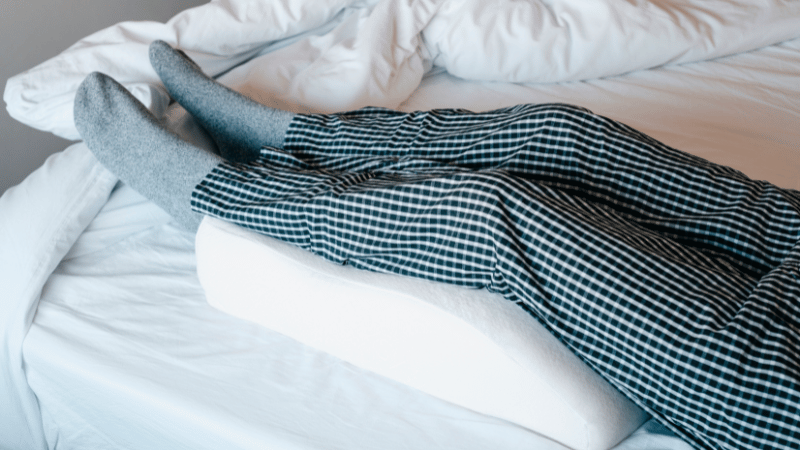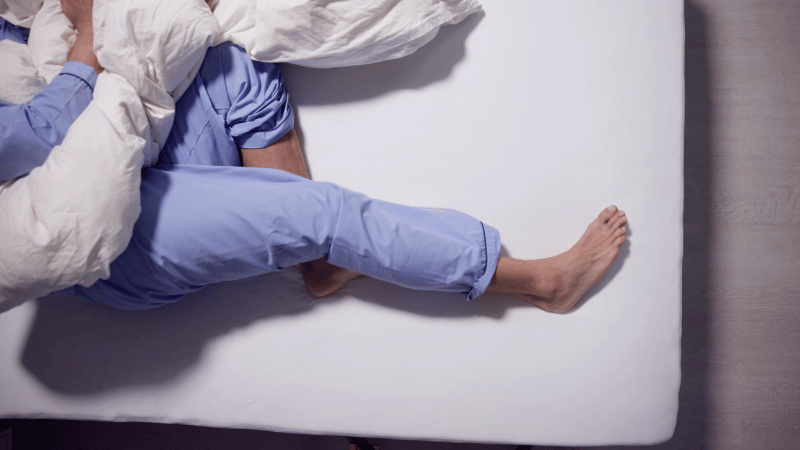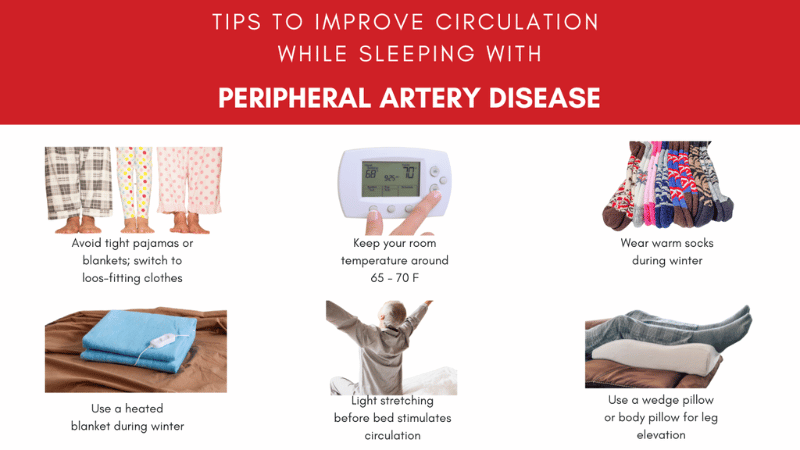Peripheral artery disease (PAD) can make it difficult to get a good night’s sleep due to reduced blood flow, which may cause leg pain or discomfort at night. Some sleeping positions may worsen symptoms, while better sleep habits and positions can help improve circulation and reduce discomfort.
If you have PAD and find yourself constantly fatigued and irritable after you wake up, it’s time to schedule a vascular health screening today to identify if PAD is affecting your sleep pattern and how PAD treatment can improve your sleep and quality of life.
How Peripheral Artery Disease Affects Sleep
Peripheral artery disease is a vascular condition caused by plaque buildup in the arteries. The plaque buildup can restrict the flow of blood, oxygen, and nutrients to the lower extremities, causing chronic leg pain and numbness.
A key symptom of PAD is claudication, which is leg pain and cramping during activity. In severe cases, this pain can occur even at rest or when lying down. This rest pain often worsens at night, making it hard to get a good night’s rest. You might wake up throughout the night to reposition yourself, impacting your sleep routine.
Other ways that PAD can disrupt sleep include poor circulation, which reduces blood flow to the legs and feet and can cause an unwanted tingling sensation, leading to restless leg syndrome (RLS) and chronic irritation.
Struggling with nighttime leg pain? Take our risk assessment to learn more about factors that may contribute to PAD and discuss your concerns with a doctor.
Best Sleeping Positions for PAD Relief
If PAD symptoms are disrupting your sleep, there are sleeping positions that can offer pain relief. Adjusting your sleeping position can also help improve circulation and lessen the severity of your nighttime PAD symptoms. Some of the best sleeping positions for peripheral artery disease include:
Elevating Legs for Improved Blood Flow
Sleeping with legs elevated can improve blood flow and circulation, reducing unwanted swelling and discomfort while sleeping.
You’ll want to wedge a firm pillow under your legs for this PAD sleeping position. Ensure your legs are elevated above your heart level but not too high.
Side Sleeping for Less Pressure on Arteries
Sleeping on your side can help minimize pressure on leg arteries and promote better circulation. However, you’ll want to ensure you sleep on your left side. Your left side is closer to your heart, which keeps the pressure off your organs for optimal blood flow. You’ll want to avoid curling up into a ball to prevent restricting your circulation.
Sleeping with a Slightly Raised Head
This sleeping position for peripheral artery disease can help you avoid fluid buildup in the legs, offering pain relief throughout the night. Keeping your legs lower than your heart can also help improve blood flow to the lower extremities.
Stacking your pillows under your head and shoulders can help slightly elevate your head. An adjustable bed might be helpful.
What Sleeping Positions to Avoid If You Have PAD
Some sleeping positions can worsen your PAD symptoms at night. To reduce nighttime discomfort, you’ll want to avoid the following positions:
Sleeping Flat on Your Back Without Elevation
Sleeping flat on your back makes it more challenging for blood to reach your feet. This can cause discomfort, numbness, and tingling in your lower extremities.
Sleeping with Legs Crossed
Crossed legs can restrict blood flow and worsen PAD symptoms overnight. Keep your legs uncrossed and parallel to avoid discomfort.
Tight Fetal Position
Fetal position can reduce pressure in your joints and alleviate back pain. However, if you curl up too tightly, it can compress your arteries and reduce circulation.
PAD Treatments: Get a Good Night’s Sleep
If you’re unsure if you have PAD but are exhibiting symptoms, you’ll want to schedule a consultation with a vascular specialist for a proper screening. A specialist at USA Vascular Centers can offer you an accurate diagnosis and a tailored treatment plan to help alleviate symptoms. If they suspect you have PAD, they may recommend one of the following non-surgical treatment options:
- Angioplasty: A balloon is used to open narrowed arteries.
- Angioplasty with stent placement: A stent is placed after an angioplasty to keep the artery open.
- Atherectomy: A blade or laser removes plaque from the artery’s walls to restore circulation.
Sleep Soundly With PAD Treatment
Adopting proper sleeping positions can help you improve your sleep patterns and ensure you wake up feeling well-rested in the morning. Adjusting your nighttime routine—such as elevating your legs or changing your sleep position—may help relieve discomfort but won’t stop PAD from progressing. PAD is a progressive disease that cannot be cured. If you have PAD, you’ll need to seek professional care to manage the symptoms effectively.
USA Vascular Centers is here to help you protect your vascular health. Our vascular doctors will offer support at one of our state-of-the-art outpatient treatment centers and provide you with expert recommendations based on the severity of your condition.
Schedule a consultation with USA Vascular Centers by calling 888.773.2193 or using the online scheduling tool.






